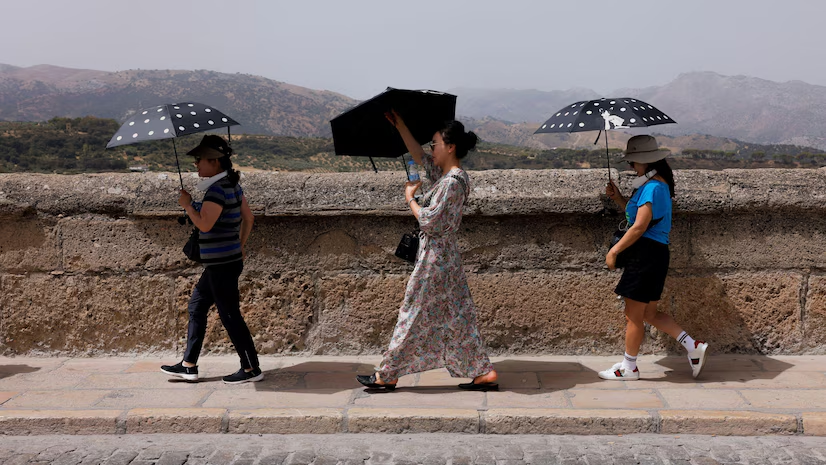A study that highlights the combined risk posed by a heating world and an ageing population has shown that the heat exposure of older people will at least double in all continents by 2050.
Compared with today, there will be up to an extra 250 million people aged 69 or above who are exposed to dangerous levels of heat, defined as 37.5C. The paper warned this is likely to create biological and social vulnerability hotspots with increasing concentrations of older adults and high temperature extremes.
The impact on health systems and global inequality will be huge, the paper published in Nature Communications warned, because older people are more vulnerable to high temperatures and the populations that will be worst affected tend to be in the hotter, poorer global south.
The global population is ageing at an unprecedented pace. By mid-century, the number of people aged 60 or above is forecast to double to 2.1 billion, which will be more than one in every five people on the planet. “Two-thirds of them will live in low- and middle-income countries where extreme climate events are especially likely,” the paper predicted.
In most continents, there is a noticeable north-south divide with the hotter, poorer southern hemisphere affected more severely than the cooler, richer northern hemisphere.
Read also: Researchers say herd of 170 bison could store CO2 equivalent of almost 2m cars
In terms of total population, Asia will experience levels of older adult heat exposure nearly four times higher than other regions due both to its large population and hot climate. But every region will see enormous increases. Compared with today, exposure will rise threefold in South America and Europe by 2050, and nearly double in Oceania, North America and Africa.
The ageing trends are most pronounced in Europe, where a quarter of people will be over 69 years old by 2050, and North America, where a fifth are in this bracket. But in terms of absolute numbers, Asia and Africa will see greater increases because their populations are far bigger. These continents are also hotter and poorer so they will face considerably greater burdens.
The human body has a reduced capacity to thermoregulate as it gets older. Older people are also more likely to have chronic illnesses, such as heart and respiratory problems, that worsen the risks of heat exposure. A higher proportion are physically infirm, living alone and rely on medications that cause dehydration, such as diuretics, laxatives and bumetanide (which reduces extra fluid in the body).
In recent heatwaves, death tolls have tended to be higher among elderly people, particularly those with low mobility or in sheltered housing with inadequate air conditioning. Among the cases cited by the paper are the deaths of 3,500 older adults in the 2015 heatwave in India and Pakistan, the high mortality rates among older people in the 2022 European heatwave and the deaths of residents in a Florida nursing home after a power outage in 2017.
Story was adapted from the Guardian.
